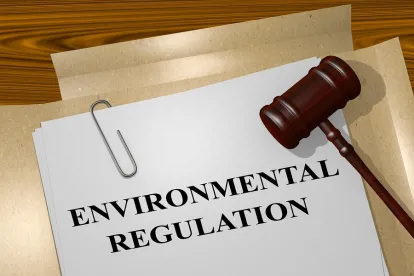2030 is the new 2050 as US President Joe Biden has officially set a new goal for fighting climate change over the next decade in the United States. At the Leaders Climate Summit (the Summit) on Earth Day, he announced that America would aim to cut its greenhouse gas emissions at least 50% below its 2005 levels by 2030. If successful, this transition would lead to a very different America and would affect virtually every corner of the nation’s economy, including the way Americans get to work, the sources from which we heat and cool our homes, the manner in which we operate our factories, the business models driving our corporations and the economic factors driving our banking and investment industries. The effectiveness of this transition lies in the administration’s ability to pull on two historically powerful levers: Tax policy and infrastructure funding. However, tax policy will call upon multiple sublevers, such as increased tax rates, expanded tax credits, refundability, carbon capture, offshore wind, storage, transmission, and infrastructure investment. All of this will be bolstered by the American corporate sector’s insatiable appetite for environmental, sustainability, and governance (ESG) goal investment.
QUICK TAKEAWAYS
There were six key announcements at the Summit for renewables developers, investors, and corporates to take note:
-
The United States’ commitment to reducing its greenhouse gas emissions by 50% – 52% below its 2005 emissions levels by 2030
-
The United States’ economy to reach net-zero emissions by no later than 2050
-
The United States to double the annual climate-related financing it provides to developing countries by 2024
-
The United States to spend $15 billion to install 500,000 electric vehicle charging stations along roads, parking lots and apartment buildings
-
A national goal to cut the price of solar and battery cell prices in half
-
A national goal to reduce the cost of hydrogen energy by 80%
President Biden’s goals are ambitious. It is clear from the history of renewable incentives in the United States as well as current developments that moving forward, the green agenda will predominately rely on two primary levers being pulled at the federal level: Tax policy and infrastructure funding. The federal tax levers mentioned above will not be pulled in a vacuum. Instead, they will be pulled in the midst of a tectonic shift among individual investors that now demand that institutional investors and corporations begin to create and meet ESG goals as individual customers are beginning to take a corporation’s climate goals and footprint into account when making purchasing decisions.
As a result, we discuss the following areas in greater detail below:
-
Tax policy
-
increased tax rates
-
expanded tax credits
-
refundability
-
carbon capture
-
offshore wind
-
storage
-
transmission
-
-
Infrastructure bill
-
ESG environment
DEEPER DIVE: BREAKING DOWN EACH LEVER AS WELL AS ITS OPPORTUNITIES AND CHALLENGES
-
Tax Policy: The consistent message from the Biden Administration, at the Summit and elsewhere, makes clear that tax policy will likely play a significant role in the administration’s ambitious climate agenda. At this time, the administration is mostly speaking in terms of high-level policy proposals. Meanwhile, members of Congress have introduced specific bills with renewable energy tax policies—giving the public an idea of where we will see legislative priorities. Energy tax policy could lead climate action for a couple of key reasons. First, the use of tax incentives has been an effective tool over the past four decades to move the renewable energy industry forward and could continue to offer important incentives today. Second, and equally as important, because of the congressional reconciliation process, the administration’s proposed tax incentives and expenditures will have a decent chance of enactment even with a 50-50 divided Senate.
-
Increased Tax Rates: Under the previous administration, we witnessed a substantial cut in the corporate tax rate. President Biden and the Democrats in Congress have already made it known that they intend to raise corporate tax rates and have proposed an increase in the capital gains tax rate for high earners. The potential increased tax liability may spur some renewable tax equity investors to increase their stake in projects, which should propel more projects to profitability and completion. Increased tax rates would make other tax incentives from renewable projects–like depreciation deductions–more valuable to investors, further helping to generate interest in the tax equity market. More significantly, these proposed tax rate increases would provide a substantial tax base for funding many of the other tax and infrastructure goals on the administration’s list. Although many of the administration’s other tax policy priorities are speculative at this time, most observers are fairly confident that we’ll see some increase in tax rates to underwrite the Biden Administration’s policy initiatives, including some climate change initiatives.
-
Expanded Tax Credits: Since 1992, and for a short period prior to that, the US government has supported the expansion of renewable energy through a variety of tax credits. The current system includes both the production tax credit (PTC) and investment tax credit (ITC) and availability is dependent on the underlying technology. The PTC and ITC are both currently being phased out. The push for renewable energy priorities in 2021 will likely build off of, and expand on, the current tax credit system. We began to see what these tax credits might look like when US Senator Ron Wyden (D-OR) introduced the Clean Energy for America Act (the Act) on April 21, 2021. The Act would replace the current ITC and PTC regimes with technology-neutral tax investment and production credits for facilities with zero net or net negative carbon emissions. For the first time, stand-alone energy storage and qualifying transmission projects would be eligible for the tax credit. The Act would also provide further incentives and certainty for carbon capture technology, offshore wind and other renewable energy technologies. Instead of phasing out at a fixed date, like the current tax credits, the proposed credits would sunset once certain emission targets are achieved. The Act also includes prevailing wage requirements and increased tax credits for low income areas. Other congressional proposals have tinkered at the edges of the current ITC and PTC regime, extending the phaseouts by 10 years. An extension and expansion of renewable energy tax credits would bring many new players–both investors and developers–into the market and drive development of the renewable energy infrastructure needed to achieve President Biden’s climate goals. Whether expanded tax credits get passed in 2021, and in what form, remains to be seen but given the success of these programs in the past and the administration’s ambitious goals for climate change, there’s a good chance we will see expanded and extended renewable energy tax credits within the next year.
-
Refundability: While these tax credit expansions are critically important, the renewable energy industry is facing a new and unique problem in 2021: It is a victim of its own success. The massive expansion of renewable energy development and the insatiable demand for clean energy from US utilities, corporations and consumers has led to a situation where, in 2021, there is likely more demand for tax equity investments from renewable developers than there is capacity for investors to utilize these tax credits. Under the current tax credit regime, tax credits can only be used to offset actual tax liability, but most renewable energy project developers are operating in a tax loss position and are unable to use the credits. Without new entrants into the renewable tax credit market, there is a limit to how effective tax credits could be. Moreover, some market participants, like utilities and electric cooperatives, may not be able to use the credits directly. Thus, there is a growing demand from renewable developers and a growing openness by congressional leaders that, in addition to tax credit extensions, the United States will need to provide direct pay tax credits to developers so as not to dampen the momentum of renewable energy in this country. A refundability mechanism also has the benefit of being simpler, which can bring more players into the market and reduce transactional costs for all parties. One consideration for taxpayers pushing for a refundability mechanism relates to timing: If the refund is taken on the tax return, will many developers be effectively foreclosed from benefitting because they need the cash on delivery (COD), and thus still beholden to tax equity? There has been much discussion since November about the possibility of incorporating a refund mechanism for renewable energy credits, with a handful of bills introduced in Congress. The proposals vary as to whether the refund would be a percentage of the tax credit otherwise available (e.g., 85%), versus for the full amount. Neither party in Congress has historically seemed very open to refundability, but there seems to be a new willingness to at least consider the possibility. Whether refundability is ultimately adopted in climate change tax policy is very much up in the air.
-
Carbon Capture: Congress significantly expanded the tax credit available for carbon capture technologies in 2018. In response to the credit expanse, there has been a flurry of new activity in this space in recent years from both large and small players. Carbon capture credits may appeal to both investors and developers; the Internal Revenue Service (IRS) has effectively signed off on using tax equity structures for these projects, but many of the major carbon emitters are traditional fuel producers who have more than enough tax liability to take the credit directly. While there has not been any specific legislative actions or proposals for carbon capture this year, many experts believe that an ambitious climate change agenda will need to rely heavily on this technology. At the Summit, President Biden specifically mentioned a future that involves carbon capture technology. Expansion of the existing credits seems far more likely than the adoption of a new carbon tax on carbon emitters–an idea which has historically faced significant opposition in Congress and has no known support from President Biden.
-
Offshore Wind: In December, Congress created a new standalone tax credit for offshore wind. These projects are notoriously expensive to build, and their economic viability will clearly turn on whether they are supported by a robust tax credit regime. Given the long lead time associated with offshore projects, it’s too early to see whether the new credit is enough to spur activity in this industry or whether offshore wind will get expanded support from Congress.
-
Storage: Taxpayers have been clamoring for a standalone tax credit for renewable energy storage for years. Under the current tax credit system, storage associated with a renewable energy generation facility likely qualifies for credits, though the IRS has been promising guidance for some time to remove uncertainties surrounding the credits for these technologies. Because of these uncertainties, there may have been reluctance from investors and developers to commit to storage projects. As mentioned above, some early congressional proposals include credits for standalone storage, so this is something else that may be included in climate change tax policy.
-
Transmission: Perhaps one of the biggest barriers when converting energy production to renewables is the lack of transmission capacity. There are several proposals to expand the ITC to transmission infrastructure, which would support the growth of renewable projects. President Biden has also been a vocal supporter of upgrading the nation’s grid. With all that said, there are some uncertainties as to whether tax credits are an economically efficient tool for achieving the administration’s goals for expanding the transmission network.
-
-
Infrastructure Bill: At the Summit, Biden touted his $2.3 trillion infrastructure plan, which aims to make electric vehicles more affordable, incentivize building electric vehicle charging stations, retrofit buildings, replace lead pipes and modernize the nation’s electrical grid. The limitations of the aforementioned reconciliation process and statements made by key moderate senators make it difficult to predict the eventual scope and impact of the infrastructure bill. However, all parties seem to recognize that an infrastructure bill is necessary, as evidenced by the bill submitted by the Republican Party on April 22. There is certainly a wide difference between the Biden-proposed infrastructure bill and the Republican-proposed infrastructure bill, including in the treatment of renewable energy. However, we have now seen the two end posts of what this bill might look like. We anticipate a great deal of negotiation moving forward on this bill and to eventually see some form of infrastructure bill to help the United States in its COVID-19 recovery. The renewable energy industry hopes that the final infrastructure bill will include provisions to help further transmission modernization and encourage climate resilience.
PRIVATE SECTOR ESG APPETITE
It is clear that the federal government is no longer standing alone in the fight against climate change and that prudent investors and corporations now have a role to play or risk becoming irrelevant. During the previous administration, we witnessed four years of record renewable energy growth and expect many more years of continued growth in the future because of the broad-based support for climate change mitigation approaches. More than ever before, state and local governments are craving clean energy to fuel their needs. We see that corporate off-takers and utilities are recognizing the economic benefits of renewable energy purchases and purchasing record amounts of clean electricity.
Additionally and critically, individual investors are demanding that institutional investors and corporations begin to create and meet ESG goals as individual customers are beginning to take a corporation’s climate goals and footprint into account when making purchasing decisions. According to the Forum for Sustainable and Responsible Investment, there were over 830 registered investment companies with ESG assets, including 718 mutual funds and 94 exchange-traded funds (EFTs), in 2020. ESG assets managed by registered investment companies were over $3 trillion in 2020, up from $2.61 trillion in 2018.
With the growth in the demand for ESG goals, corporations that need to evolve to adapt to the new climate-focused world we are entering. Corporations that create clear ESG missions and begin to look at the ways that they can help reduce their carbon footprint and mitigate climate change are likely to be the economic winners moving forward.
GLOBAL SUPPORT FOR THE CLIMATE FIGHT AT THE LEADERS CLIMATE SUMMIT
President Biden hosted over 40 world leaders at the Summit, including notable participants such as Brazil, China and Russia. It was a visible example of the actions of a concerned administration, as well as a global community, and was neither the beginning nor the end of what is being done to fight climate change. Instead, the Summit is likely a key step among many as the United States aims to promote global cooperation in the fight against climate change and to step back into a position of leadership on this issue.
For instance, President Biden opened the first session by stating climate action was a moral imperative and pledging that the United States would not be waiting any longer. He stated that this was the decade in which action needed to be taken if the United States was to reach its net-zero goals by 2050. As such, he committed the United States to reducing its greenhouse gas emissions by 50% – 52% below its 2005 emissions levels by 2030 (which is nearly double the 2015 goal set by the Obama Administration). What followed throughout the Summit was world leaders providing strong climate commitments for their respective nations, as well as an appearance by Pope Francis who encouraged world leaders to unify in the fight against climate change.
CONCLUSION
Due to the constantly shifting US political winds, it is understandable that there might be some trepidation from those outside of the renewable energy industry as to the long-lasting commitment of the US government, however, the US Special Presidential Envoy for Climate Change John Kerry addressed such skeptics during the Summit by citing the economic forces that have been larger than domestic politics and projecting that the market demand for renewable energy would be too strong to be overcome moving forward. Kerry pledged that Biden would take active steps to confront climate change and rebuild American credibility abroad. The Summit, when accompanied by the plethora of other legislative, regulatory and executive announcements that we have seen within the first 100 days of the Biden Administration shows that climate will take center stage throughout this administration. The global demand for better environmental stewardship shows that the fight to combat climate change will continue to be a global priority long after the Biden Administration ends.









 />i
/>i
